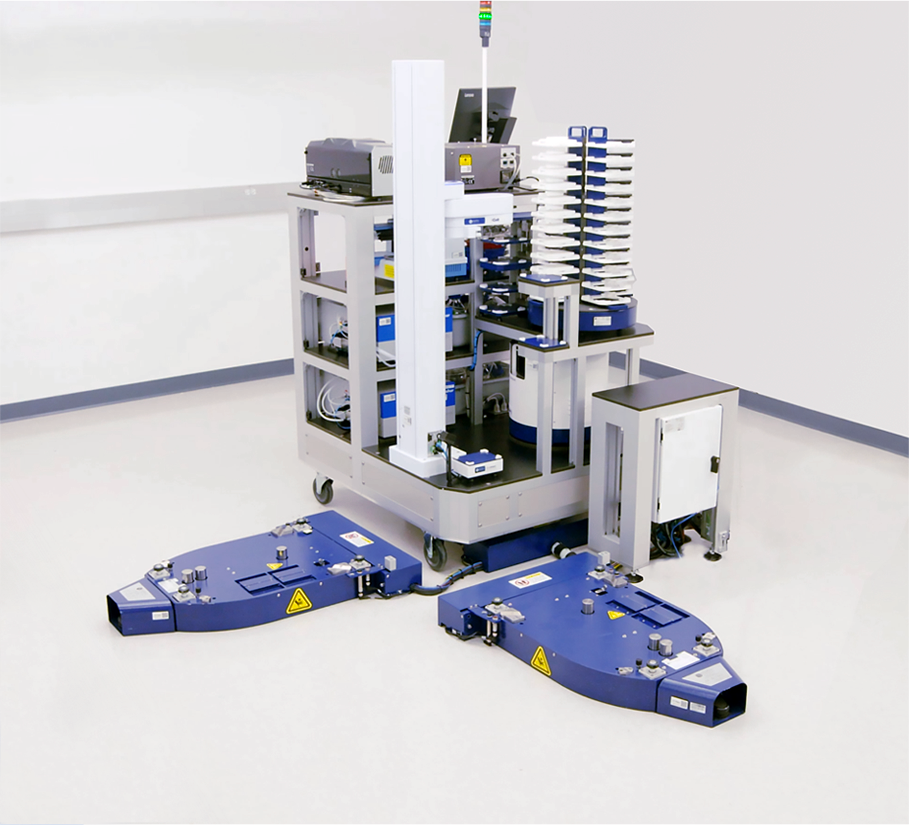High Throughput Screening Automation
What is High-Throughput Screening?
Commonly used in drug discovery and other life science fields, high-throughput screening (HTS) uses automated liquid handling devices, multi-mode readers and other devices paired with data processing and control software, to perform biological or chemical tests at scale. Labs using high-throughput screening can run millions of tests, such as screening large numbers of compounds against a variety of different assay formats, in a short amount of time.
High-throughput screening allows labs to quickly test the biological or chemical activity of a molecule in a cost-effective way. High-throughput screening is especially valuable in pharmacological projects such as drug discovery, as it is a useful tool in assessing pharmacological targets, or in quickly profiling pharmacological agonists or antagonists for a given drug.
How is High-Throughput Screening Used?
High-throughput screening is commonly used in pharmacological, biological and chemical laboratories to quickly identify compounds with pharmacological or biological activity.
Most commonly, high-throughput screening involves 103 – 106 small molecules of a known substance being screened in parallel. Substances such as natural product extracts, antibodies and chemical mixtures can also be used. Under high-throughput screening, more than 100,000 samples can be screened per day using robotic sample handling, automated data processing and other lab automation devices.
The results of a high-throughput screening campaign can be used in a variety of ways from helping to create the basics of a drug design to creating an accurate toxicology report that better characterizes the biological effects of chemicals with fewer false positives or negatives.
Example of a flexible, modular, integrated HTS system.
The Benefits of Automating the High-Throughput Screening Process
Fully integrating the high-throughput screening process can deliver significant acceleration and efficiency improvements vs. isolated “workstation” based automation. Utilizing dedicated robots to move labware between devices, controlled by dynamic scheduling software, enables many parallel operations to be performed in synchronization – greatly increasing throughput whilst maintaining controlled experimental conditions.
HighRes offers a suite of hardware and software tools that can be deployed for HTS automation.
How HighRes Can Help
At HighRes Biosolutions, we provide integrated lab automation solutions that bring together the power of robotics and the intelligence of scientists to accelerate research and development. When it comes to high-throughput screening automation, we understand that these may be among the most complex automation designs in your lab – your workflow and requirements are unique, and our approach is to tailor lab automation solutions using the best devices and software for your workflow and ensure your success.
We promote modularity and flexibility on our automation platforms to enable your teams to easily bring new sets of compounds to an automated screening system, allow your users to switch out readers and other devices when changing assays, introduce new technologies and evolve as the demands on your lab change over time.
Read about how our client AstraZeneca uses HighRes integrated automation to drive their high throughput screening operations: https://www.drugtargetreview.com/article/58060/laboratory-automation-in-early-drug-discovery/
Finally, each of our integrated systems are powered by Cellario, the world’s easiest-to-use lab automation software. Cellario accelerates your experiments and operations by bringing together the full power of automation and robotics – with industry leading tracking, error recovery and an open, robust API architecture that allows for seamless integration with other data systems in your organization.
We believe that scientists and robots working together empowers you to greater performance and further discovery. We invite you to learn more about how automating your lab can accelerate discoveries and magnify your output.


